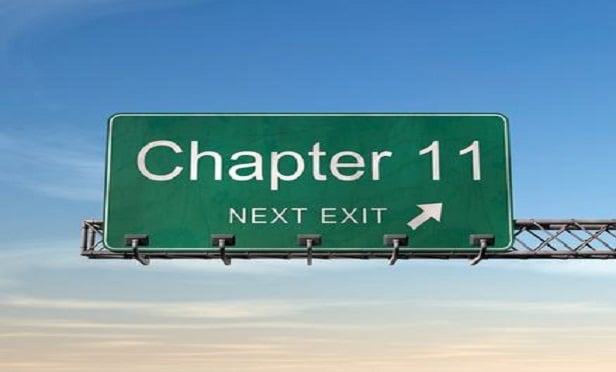Features

The Barton Doctrine: Suit Against Receiver Did Not Require Court Permission
The Fifth Circuit recently addressed a new fact pattern and issue concerning the Barton doctrine: whether a receiver appointed in a state court action could be sued in a subsequent bankruptcy case of the debtor absent court permission.
Features

District Court Affirms Bankruptcy Court Conversion of Subchapter V Case to Chapter 7
The U.S. District Court for the Southern District of New York affirmed a decision by the U.S. Bankruptcy Court for the Southern District of New York converting a debtor’s Subchapter V case to a Chapter 7 case. In particular, the district court found that the bankruptcy court’s decision to convert was not an abuse of discretion, especially in light of the serious conflicts of interest that existed between the debtor and the potential target of significant fraudulent transfer claims held by the debtor’s estate.
Features

Chapter 11 Not Safe Harbor for Debtor to Delay Creditors, Bankruptcy Court Rules
A ruling by a federal bankruptcy judge in New York denying attorney’s fees to a debtor’s counsel sends a startling reminder to attorneys and clients alike. The Chapter 11 process is not intended to be a safe harbor for a debtor solely to delay creditors or circumvent other legal proceedings.
Features

Court Allows Nonconsensual Releases of Third-Party Claims to Be Included In Settlement Agreement
The bankruptcy bar and courts are attempting to determine the breadth and depth of the Purdue ruling both as to what constitutes consent under a plan of reorganization and whether Purdue applies to other bankruptcy proceedings, including a sale of assets under section 363 of the Bankruptcy Code, free and clear of claims, and approval of settlements. The U.S. Bankruptcy Court for the Eastern District of Virginia recently faced these issues.
Features

Bankruptcy Experts Debate Intersection of Mass Torts and Bankruptcy
Perhaps the debate over whether multidistrict litigation or bankruptcy is a better vehicle to resolve mass torts need not be binary. Bankruptcy experts recently discussed the increasingly busy intersection of mass torts and bankruptcy as part of a discussion sponsored by the UC Berkeley School of Law ’s Civil Justice Research Initiative.
Features

Harmonizing a Debtor’s Right to File for Bankruptcy Against a Creditor’s Desire to Protect Its Financial Interests
How to harmonize a debtor’s right to file against a creditor’s desire to protect its financial interests in that debtor has sparked a number of different judicial opinions.
Features

Did 'FTX' Start Trend of Using the Threat of an Examiner Costs and Complications As a Source of Leverage?
There are some indications that parties may in fact be using the threat of an examiner and its associated costs and complications as a source of leverage, although the jury is still out on the full impact of the FTX decision on examiner motion practice.
Features

Enforceability of Governance Provisions Restricting Access to Seek Bankruptcy Relief
For more than six years there has been an ongoing debate regarding the enforceability of governance restrictions, whether blocking rights, golden shares and other provisions designed to manage access to bankruptcy relief. This year, another governance restriction was upheld in dismissing a bankruptcy filing by a debtor that failed to obtain the consent of the lender-approved independent manager as required by its LLC agreement.
Features

Mastering AI for Legal Professionals
Mastering AI tools is vital for law firms striving to remain competitive. The increasing demand for prompt and effective services means firms that do not adapt may fall behind. Mastery of AI enhances workflow efficiency while enabling predictive analysis, client insights, and improved decision-making.
Features

J&J’s Third Talc Bankruptcy Case Begins
A critical trial in Johnson & Johnson’s talcum powder bankruptcy began on February 18, with several lawyers arguing to dismiss the Chapter 11 case and reject the $10 billion plan.
Need Help?
- Prefer an IP authenticated environment? Request a transition or call 800-756-8993.
- Need other assistance? email Customer Service or call 1-877-256-2472.
MOST POPULAR STORIES
- Compliance Officers: Recent Regulatory Guidance and Enforcement Actions and Mitigating the Risk of Personal LiabilityThis article explores legal developments over the past year that may impact compliance officer personal liability.Read More ›
- The DOJ's Corporate Enforcement Policy: One Year LaterThe DOJ's Criminal Division issued three declinations since the issuance of the revised CEP a year ago. Review of these cases gives insight into DOJ's implementation of the new policy in practice.Read More ›
- How Far Can You Reach? The Territorial Limits of Lanham Act Infringement and False Designation of Origin ClaimsOn June 29, 2023, the U.S. Supreme Court set new geographic limits for infringement and false designation of origin claims raised under Sections 1114 and 1125(a) of the Lanham Act. Given the global nature of business today, the decision highlights the need for trademark owners to continually reassess and, perhaps, expand their international trademark registration strategy as product lines and brands become more international in scope.Read More ›
- Internet Goods and Product LiabilityThe Internet's value arises in part from its ability to provide images, data and content quickly and at little cost. This ability results from the fact that Internet products — whether they be images, data or content — are each reduced to a digital format. Sharing products that have been so reduced may result in product liability.Read More ›
- Making the Office a Destination: The Rise of Hospitality In Law FirmsThe law firm office cannot remain unchanged, therefore, as if frozen in time set to some date prior to the onset of pandemic, when all the terms and meaning have all changed. In fact, the office must now provide benefits or an experience the lawyers and staff cannot get at home.Read More ›
